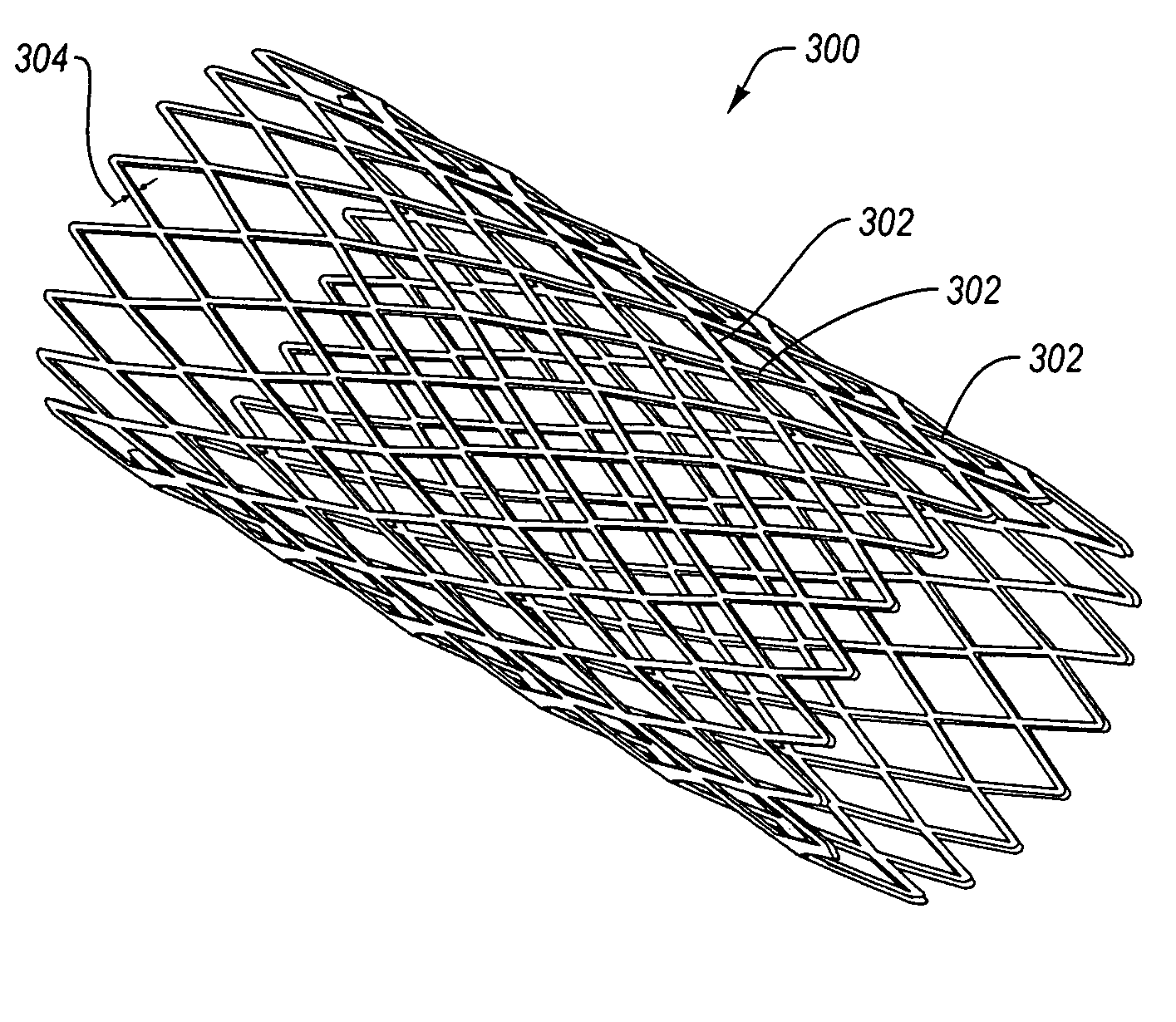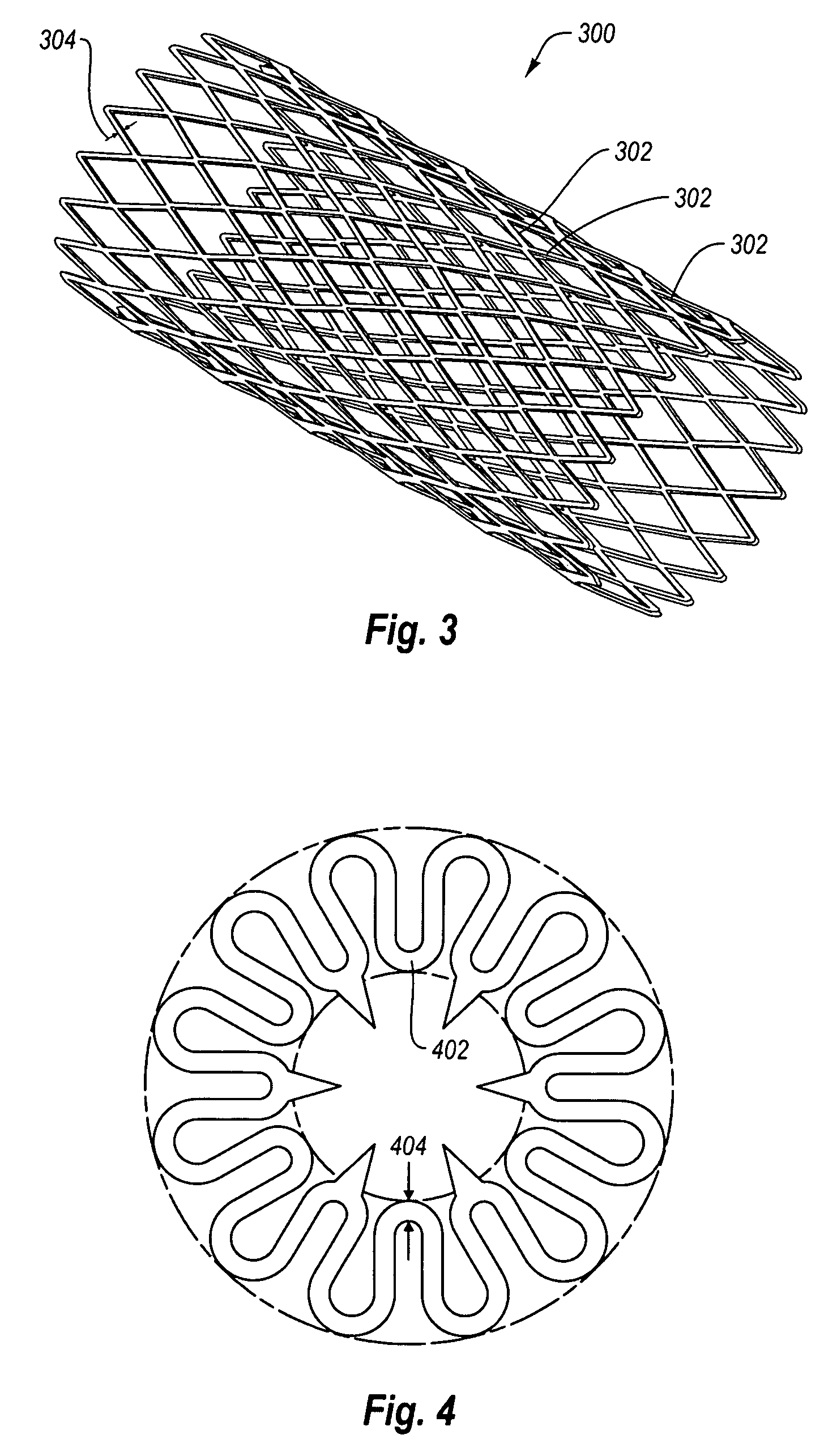Fatigue-resistant nickel-titanium alloys and medical devices using same
a nickel-titanium alloy and fatigue-resistant technology, applied in the field of medical devices, can solve the problems of increasing fatigue life and prolonging the useful life of manufactured articles, and achieve the effects of reducing the incidence of crack propagation, increasing fatigue life and increasing fatigue li
- Summary
- Abstract
- Description
- Claims
- Application Information
AI Technical Summary
Benefits of technology
Problems solved by technology
Method used
Image
Examples
example 1
[0157]In Example 1, nitinol (NiTi) and a radiopaque nitinol (R-nitinol) alloy (NiTiPt) wire samples (manufactured by Fort Wayne Metals) were used to study the differences in fatigue life between NiTi and NiTiPt. The NiTi and NiTiPt wires were approximately 40% cold worked and heat-treated and straightened with an Af temperature of approximately 8° C. (bend and free recovery method).
[0158]The composition of the nitinol was 50.8% nickel and 49.2% titanium. The R-nitinol used in this study included 43% nickel, about 49.5% titanium, and about 7.5% platinum. The wire specimens were drawn to an initial diameter of 0.343 mm, hand-sanded with sandpaper, and electropolished using hydrochloric acid and nitric acid. The final diameter of the electropolished nitinol and R-nitinol specimens was 0.300 mm and 0.280 mm, respectively.
[0159]To illustrate differences between NiTi and NiTiPt alloy wires, were subjected to fatigue testing and failure analysis. Fatigue testing was performed on NiTi and N...
example 2
[0169]In Example 2, radiopaque nitinol (R-nitinol) alloy (NiTiPt) wire samples that failed due to the presence of inclusions were excluded from calculations to study the differences in fatigue life between NiTi and inclusion-free NiTiPt. The data summarized in Table 1 suggests that Ti4(NiPt)2Ox inclusions appear in the NiTiPt inconsistently. For example, NiTiPt wire has a bifurcated failure probability with similar failure probabilities appearing at a strain of about 0.75% and a strain of about 1.05%. It is believed that NiTiPt failures at low strain are caused by inclusions, while the higher strain limit of 1.05% is more representative of the true potential of NiTiPt.
[0170]In order to test this hypothesis, samples from the group in Example 1 having Ti4(NiPt)2Ox inclusions at the fracture origin are excluded from calculations and the date were re-plotted in FIG. 7. For NiTi specimens, the predominant strain group can be seen at 0.75%; for NiTiPt specimens, the predominant strain gro...
example 3
[0171]In Example 3, nitinol (NiTi) and a radiopaque nitinol (R-nitinol) alloy (NiTiPt) wire samples were used to study the differences in fatigue life between NiTi and NiTiPt as a function of surface finish. Table 2 summarizes the various wire samples used in these experiments.
[0172]
TABLE 2NameMaterialWire ODSurface FinishNiTiPt LargeNiTiPt Alloy0.343 mmDrawn / HT0.305 mmInsuff-EP0.279 mmEPNiTi LargeNiTi Alloy0.343 mmDrawn / HT0.305 mmEP
[0173]Data comparing surface treatments for NiTiPt (drawn / HT vs. insufficient electropolish vs. electropolish) and NiTi (drawn / HT vs. electropolish) are depicted in FIGS. 8 and 9. These data clearly show that the fatigue life of NiTiPt and NiTi materials is improved by having a defect-free surface, such as that provided by electropolishing and other surface treating techniques discussed herein. In particular, the fatigue life of articles made from NiTiPt, a nitinol alloy that is known to be difficult to electropolish, can be improved by having a surface ...
PUM
| Property | Measurement | Unit |
|---|---|---|
| thickness | aaaaa | aaaaa |
| thickness | aaaaa | aaaaa |
| size | aaaaa | aaaaa |
Abstract
Description
Claims
Application Information
 Login to View More
Login to View More - R&D
- Intellectual Property
- Life Sciences
- Materials
- Tech Scout
- Unparalleled Data Quality
- Higher Quality Content
- 60% Fewer Hallucinations
Browse by: Latest US Patents, China's latest patents, Technical Efficacy Thesaurus, Application Domain, Technology Topic, Popular Technical Reports.
© 2025 PatSnap. All rights reserved.Legal|Privacy policy|Modern Slavery Act Transparency Statement|Sitemap|About US| Contact US: help@patsnap.com



